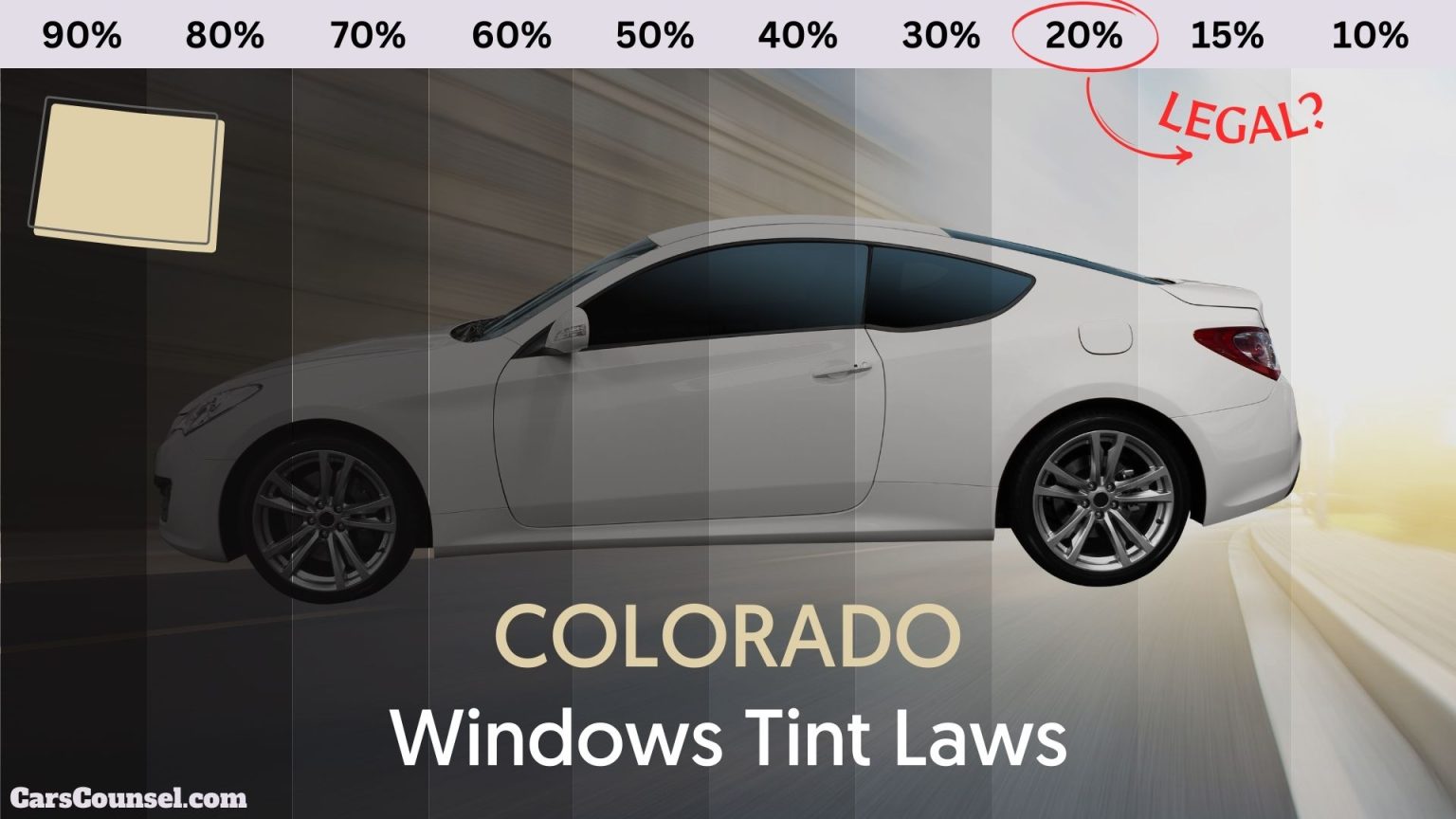What Is Legal Tint In Colorado

Alright folks, let's talk window tint in Colorado. This isn't just about looking cool (though it definitely helps!). Understanding Colorado's tint laws is crucial to avoid hefty fines and potential vehicle impoundment. Think of this as understanding the blueprints before building a custom exhaust system – you need to know the rules of the road.
Purpose: Staying Legal and Safe
This guide serves as your comprehensive resource for navigating Colorado's window tint regulations. Whether you're thinking about adding tint for aesthetic reasons, heat reduction, or privacy, knowing the legal limits is paramount. This information isn't just for avoiding tickets; it's also about ensuring safe driving conditions. Illegally dark tint can drastically reduce visibility, especially at night or in adverse weather. We're essentially building a foundation of knowledge, so you can make informed decisions about your vehicle’s tint.
Key Specs and Main Parts: Understanding VLT
The core concept you need to grasp is Visible Light Transmittance (VLT). VLT refers to the percentage of visible light that passes through the window film. A lower VLT number means less light gets through, resulting in a darker tint. Colorado regulations specify the minimum VLT allowed for different windows:
Front Side Windows:
Must allow at least 27% VLT. This means the combination of the factory glass and any aftermarket film must allow more than 27% of light to pass through. It's important to note that factory tint, which many vehicles come with, already reduces VLT, so adding even a seemingly light tint film can push you below the legal limit.
Rear Side Windows and Rear Window:
Any VLT is allowed. You can go as dark as you want on these windows, providing you have two functioning rearview mirrors. This is a crucial stipulation, as the law intends to ensure adequate visibility for the driver. If one mirror is broken or inoperable, you cannot have any aftermarket tint on your rear window.
Windshield:
Non-reflective tint is allowed only on the top 4 inches of the windshield. This is primarily for sun glare reduction and must not extend below the AS-1 line marked on most windshields. The AS-1 line indicates the area above which lighter tint can be applied.
Besides VLT, another key aspect is reflectivity. Colorado law prohibits any window tint that is excessively reflective or mirrored. This is to prevent glare that can distract other drivers.
Symbols and Terminology
While this guide doesn't involve traditional circuit diagrams, understanding the terminology is just as crucial. Here's a breakdown:
- VLT: As mentioned, Visible Light Transmittance. The higher the percentage, the more light passes through.
- AS-1 Line: The line etched on the windshield indicating the legal limit for top windshield tint.
- Factory Tint: The inherent tint in the glass of many modern vehicles. This tint is already reducing VLT and must be considered when adding aftermarket tint.
- Aftermarket Tint: The tint film you apply to your windows.
- Reflectivity: The amount of light reflected by the tint. Colorado prohibits excessively reflective tints.
How It Works: The Science of Tint
Window tint films are typically made of multiple layers of polyester film with various coatings. These coatings can:
- Reduce UV radiation (protecting your interior and skin)
- Reduce infrared radiation (reducing heat buildup)
- Control visible light transmittance (the tint itself)
The darkness of the tint is determined by the amount of dye or metallic particles embedded within the film. Higher concentrations of these materials result in lower VLT values.
Real-World Use: Ensuring Compliance
Before getting your windows tinted, consider these tips:
- Research local tint shops: Look for reputable shops with experience in installing legal tint in Colorado.
- Ask for VLT readings: A good shop will use a VLT meter to measure the existing VLT of your windows *before* applying tint, ensuring the final result is legal.
- Keep documentation: Obtain a receipt from the tint shop specifying the VLT of the film used. This can be helpful if you're ever questioned by law enforcement.
- Understand factory tint: As mentioned before, factory tint affects the final VLT reading. Don't assume your windows are clear.
Basic Troubleshooting:
What if you get pulled over and an officer claims your tint is too dark? Here's what to do:
- Be polite and respectful. Arguing with the officer won't help.
- Ask for a VLT reading. Most officers carry VLT meters.
- If the reading is illegal, accept the citation. You can fight it in court later.
- Gather evidence. If you believe the officer's reading was inaccurate, take pictures of your windows in various lighting conditions. Get a VLT reading from a reputable tint shop.
Safety: Potential Risks and Precautions
While window tint installation is generally safe, there are some potential risks to be aware of:
- Improper Installation: Bubbles, creases, and peeling can occur if the tint is not installed correctly. This can obstruct vision and require costly removal and re-installation.
- Damaged Defrosters: On rear windows with defroster lines, improper tint removal can damage these delicate lines, rendering them useless.
- Obstructed Vision: Illegally dark tint significantly reduces visibility, especially at night or in low-light conditions. This can increase the risk of accidents.
Always prioritize safety. Don't compromise visibility for aesthetics. Choose a reputable installer, use legal VLT films, and regularly check your windows for any signs of damage or peeling. Remember, the point isn’t just about having dark windows – it is about responsible vehicle modifications that comply with both the law and common sense.
Disclaimer: Laws can change, so always refer to the latest official Colorado Revised Statutes (C.R.S.) for the most up-to-date information on window tint regulations. This guide is for informational purposes only and should not be considered legal advice.
